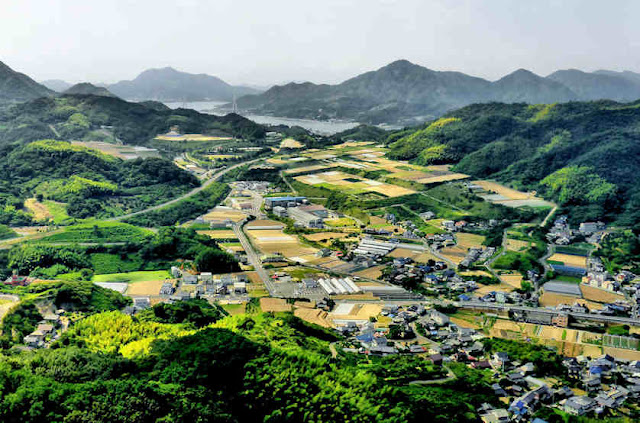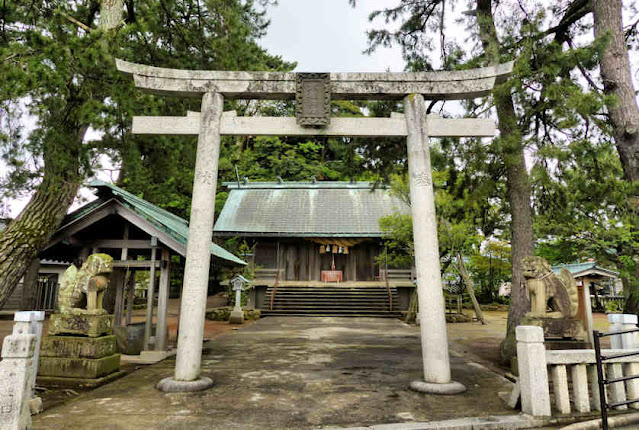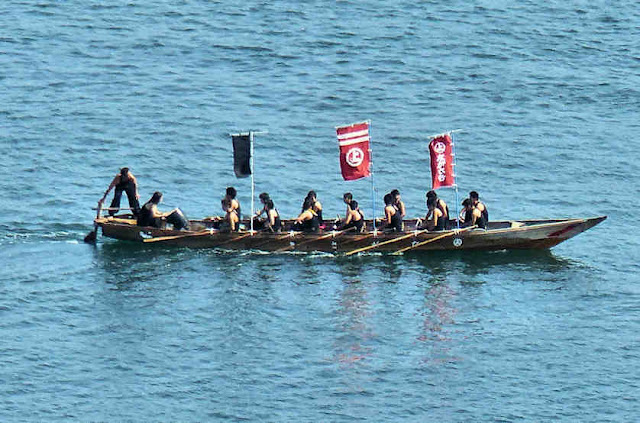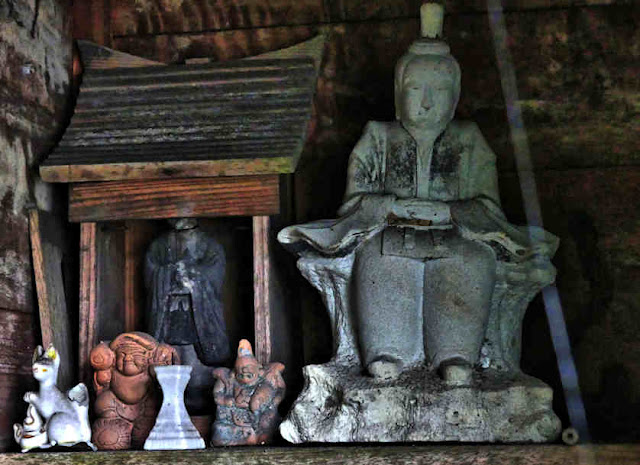Osake Shrine is a big, ancient shrine on the coast of Hyogo near to Ako.
The main kami is the spirit of Hata no Kawakatsu, whose grave is on the sacred uninhabited island just offshore.
The Hata were an intriguing immigrant clan who have unknown but variously theorized roots. Some say they were descendants of a Chinese emperor. Others say they were a "lost" tribe of Israel. Some say they came to Japan from paekche in Korea, others say Sila. Some say they spent time in Izumo before moving to Yamato.
Like other immigrant clans at the time they settled near what is now Kyoto and quite a few important sites are attributed to them, including most famously Fushimi Inari Shrine, but also Matsuo Taisha. Kawakatsu no Hata was a known associate of Shotoku Taishi and is said to have had much influence over the founding and construction of Shitennoji Temple.
One noteworthy point about Osake Shrine is that along with the shitno zuijin guardians there is also a pair of Buddhist Nio.
Also noteworthy are the large number of Ema paintings, especially those of boats. One dated to 1722 is considered the oldest and most valuable in Japan.
Not on display, the shrine owns a 1,300 year old mask, said to have been either given to Kawakatsu by Shotoku Taishi or carved by Kawakatsu himself.
Kawakatsu is said to be the founder of sarugaku, and Zeami and many other notable figures from ancient theatre styles claim to be his descendants.
Following the death of Shotoku Taishi Kawakatsu set sail and ended up in this area and spent some time developing the land. Some say he was exiled, some say he left to avoid the political violence that was commonplace in the capital at that time.
When he died a few years later his tomb was made on Ikushima just offshore and the locals built the shrine and enshrined him.
The Sakoshi Boat Festival takes place every October and is considered one of the Three Great Boat Festivals of the Inland Sea along with the Osaka Tenjin Festival and the Kangen Festival at Miyajima.
One of the traditional boats used in the festival is on display in the shrine grounds.
Most of the current buildings at the shrine date back to the 18th century.
Within the shrine grounds are numerous secondary shrines, including a Shingu Shrine to Shotoku Taishi, a Sumiyoshi Shrine and a Kotohira Shrine, both shrines connected with safety at sea.
There is also an Inari Shrine, a Tenmangu, an Ebisu Shrine and an Awashima Shrine.
There are said to be 28 branch shrines of Osake Shrine in the area, indicating its importance locally.
The island is visited by the boast during the festival, but otherwise is still off-limits to everyone, so the woodland on the island is completely natural and is a National Natural Monument.
































































